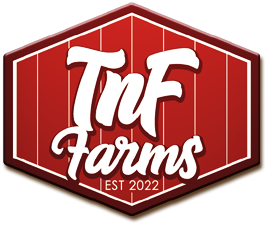Should you grow Ryegrass as a homesteader?
Ryegrass, a cool-season grass belonging to the genus Lolium, is widely recognized for its versatility and numerous agricultural applications. With species like Italian ryegrass (Lolium multiflorum) and perennial ryegrass (Lolium perenne). Ryegrass serves as a valuable forage crop for livestock. Farmers appreciate its quick germination and establishment, allowing for reliable forage in fall and winter. The high nutritional content of ryegrass makes it an excellent choice for cattle, sheep, horses, and even wildlife. Its adaptability to various soil types, along with a fibrous root system that enhances soil structure, positions ryegrass as a dual-purpose grass that not only benefits livestock nutrition but also contributes to sustainable soil management practices.
Beyond its role as a forage crop, rye grass plays a crucial role in environmental conservation. Its ability to prevent soil erosion, particularly on slopes or vulnerable terrain, has made it a preferred choice for cover cropping. As a cover crop, ryegrass forms a protective layer over the soil, reducing the risk of erosion and promoting soil health. Additionally, its quick growth makes it an effective ground cover in lawns and pastures, providing an aesthetically pleasing green carpet. Whether utilized for livestock feed, erosion control, or ornamental landscaping, ryegrass stands out as a resilient and adaptable grass species with multifaceted benefits.
Can goats eat Ryegrass?
Yes, goats can eat ryegrass, and it is a suitable forage option for them. Ryegrass provides several nutritional benefits and is commonly included in the diets of goats.
Ryegrass is known for its high nutritional content, including protein, carbohydrates, and vitamins. This makes it a valuable forage option for goats, supporting their overall health and nutritional requirements. Goats generally find ryegrass palatable, making it an attractive feed option. The palatability encourages goats to graze actively, ensuring they consume an adequate amount of forage. Ryegrass is often highly digestible, promoting efficient nutrient absorption in the digestive system of goats. High digestibility is important for maximizing the nutritional value of the forage and supporting the goats’ well-being.
As a cool-season grass, rye grass grows well in fall and winter. Its availability during cooler months ensures a continuous forage source, providing year-round grazing opportunities for goats. Ryegrass is valued for its high forage quality, which is beneficial for goats. A balanced combination of fiber and energy in ryegrass supports the nutritional needs of goats, contributing to their overall health. Ryegrass can be incorporated into various grazing systems for goats, including rotational grazing. Its quick establishment allows for flexible management of grazing areas.
Can Chickens eat Ryegrass?
Yes, chickens can eat ryegrass, and it can be a beneficial addition to their diet. Ryegrass offers several advantages for chickens, making it a suitable forage option.
Including ryegrass in a chicken’s diet provides variety and diversity. Chickens naturally forage and consume a mix of grains, seeds, insects, and greens, and ryegrass contributes to this diverse diet. Ryegrass is known for its high nutritional content, including vitamins, minerals, and protein. While it may not be the sole source of nutrition, it adds valuable nutrients to the overall diet of chickens. Chickens generally find ryegrass palatable. Its tender leaves and stems can be attractive to chickens, encouraging them to peck and graze on the grass.
Ryegrass can create a favorable habitat for insects, and chickens are natural foragers of insects. The presence of insects in and around the rye grass provides an additional protein source for chickens. Allowing chickens access to ryegrass can serve as environmental enrichment. Chickens enjoy scratching and pecking at the ground, and the presence of forage-like ryegrass provides them with opportunities for natural behaviors.
Can pigs eat Ryegrass?
Yes, pigs can eat ryegrass, and it can be a suitable forage option for them. Ryegrass offers several benefits for pigs, and it is often included in their diets for both nutritional and environmental reasons.
Ryegrass is known for its nutritional richness, containing essential nutrients such as protein, carbohydrates, and vitamins. Including ryegrass in a pig’s diet can contribute to a well-balanced and nutritious feed. Offering ryegrass adds variety and diversity to the pig’s diet. Pigs are natural foragers and benefit from having a mix of forage, grains, and other feed sources. Pigs generally find ryegrass palatable. The tender leaves and stems can be appealing to pigs, encouraging them to graze and forage.
Allowing pigs access to ryegrass can serve as environmental enrichment. Pigs are known for their rooting behavior, and having access to forage allows them to express natural behaviors and engage in rooting activities. Ryegrass can be part of a rotational grazing system for pigs. This not only provides them with fresh forage but also helps manage pasture areas and contributes to soil health.
When offering ryegrass to your livestock, consider the following:
Provide fresh rye grass to ensure its palatability and nutritional value. If the ryegrass has been treated with pesticides or herbicides, it’s advisable to avoid feeding it to your animals. Opt for untreated or organically grown ryegrass. While ryegrass is a suitable forage, it should be part of a balanced and varied diet. All livestock also require access to a complete and nutritionally balanced feed to meet all their dietary needs. If introducing rye grass to any animals for the first time, do so gradually to allow them to adjust to the new forage.
Ryegrass stands out as a valuable asset in the realm of agriculture and environmental conservation. Its nutrient-rich forage, quick establishment, and positive impact on soil health make it a versatile choice for farmers and land managers. Additionally, the diverse range of animals that can benefit from Ryegrass highlights its importance in supporting ecosystems and providing sustainable forage options for livestock.



